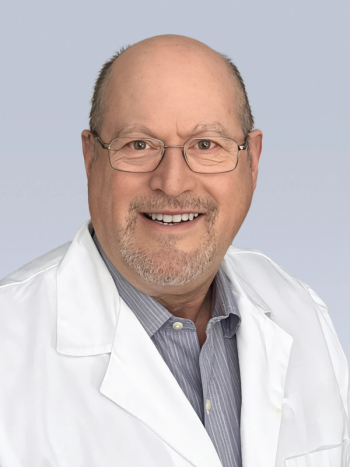
Oncology NEWS International
- Oncology NEWS International Vol 10 No 11
- Volume 10
- Issue 11
Memory T Cells in Bone Marrow Can Fight Tumors
HEIDELBERG-A "proof of concept" study from researchers at the German Cancer Research Center shows that tumor-reactive memory T cells already present in the bone marrow of many cancer patients can be mobilized, restimulated, and deployed against the individual’s own breast, ovarian, or cervical tumor.
HEIDELBERGA "proof of concept" study from researchers at the German Cancer Research Center shows that tumor-reactive memory T cells already present in the bone marrow of many cancer patients can be mobilized, restimulated, and deployed against the individual’s own breast, ovarian, or cervical tumor.
The research team, led by Drs. Volker Schirrmacher, Markus Feuerer, and Victor Umansky, think that cells from cancer patients’ own bone marrow might be activated by individualized tumor vaccines ex vivo and then be given back to the patient where they should attack tumor deposits through a "graft-vs-tumor" effect without reacting against normal cells.
A paper detailing the breast cancer data and published in Nature Medicine showed that breast cancer patients store tumor-reactive T cells in their bone marrow and that T cells from most patients can be reactivated into cytotoxic effector cells that will destroy the "parent" tumor xenotransplanted into NOD/SCID mice.
Similar memory cells exist in the peripheral blood but could not be reactivated into effector cells. The marrow memory cells are exquisitely specific. They responded only to lysates of tumor cells, not to preparations from normal cells.
Professor Schirrmacher told
ONI
that a single dose containing 5,000,000 × 10³ T cells and 1,000,000 × 10³ autologous dendritic cells was enough to produce "a strong, long-lasting graft-vs-tumor reactivity" and reduce the tumor to only its stromal scaffolding.
Tumor regression was associated with infiltration by human T cells, apoptosis of tumor cells, and tumor necrosis. Dr. Schirrmacher is head of the Cellular Immunology Laboratory at the German Cancer Research Center, Heidelberg.
"Based on experimental studies in animals, we had predicted in 1994 that the bone marrow might be a special compartment for immunological memory and tumor dormancy," Dr. Schirrmacher said. "We decided to test this in humans and investigate bone marrow from cancer patients, but we did not expect the results to provide so much support for our original idea."
Responses by reactivated memory T cells are faster and stronger than primary responses, he said. Memory cells can be triggered by lower concentrations of tumor antigen than naïve T cells and are less dependent on costimulation.
Study Results
Dr. Schirrmacher’s group took memory T cells from the bone marrow and peripheral blood of 17 breast cancer patients, and cultured them for 7 days with autologous dendritic cells that had been presoaked in lysates of either tumor or peripheral blood mononuclear cells (PBMCs).
Tumor lysates reactivated memory T cells from bone marrow (but not from peripheral blood) in 11 patients (59%). The reactivated memory cells proliferated, produced interferon-gamma, and acted as cytotoxic effector cells. Lysates of PBMCs did not reactivate the memory T cells. Similar experiments with memory T cells from healthy donors did not produce antitumor effector cells.
"The fact that we observed immunological nonresponders [among the breast cancer patients] was not a surprise. The usual range of response in immunotherapy studies is 20% to 30%, so our 59% rate was actually rather high," Dr. Schirrmacher said.
He thinks that cells displaying the innate, specific recognition of breast cancer antigens observed in more than half of the breast cancer patients in this study could be the basis for a type of vaccine therapy using the patient’s own bone marrow-derived memory T cells to generate tumor-specific killer cells and harness a graft-vs-tumor response.
To determine whether tumor-reactive memory T cells might be useful in this way for immunotherapy, the researchers established a NOD/SCID mouse model that allows outgrowth of human tumor xenografts. Freshly resected human breast tumor samples containing tumor and stroma were implanted into the mice. Dendritic cells from the patient whose tumor was implanted were pulsed with lysate from samples of the tumor and co-cultured with bone marrow T cells. The activated memory T cells were then injected intraperitoneally into the mouse.
Tumors grew in untreated mice but shrank significantly in treated mice by day 21 after treatment (P < .0001). By this time, most treated tumors remained only as stroma. Similar effects were seen in ovarian and cervical cancers.
Dr. Schirrmacher’s group has a manuscript in preparation dealing with theunderlying mechanism of the T-cell response. This is thought to reflect persistent stimulation by tumor-associated antigens (TAA) on dormant tumor cells in the bone marrow, which also may store TAA-expressing antigen-presenting cells that maintain the supply of tumor-specific memory cells.
Articles in this issue
about 24 years ago
Two Large AIDS Studies Will Increase Enrollments 60%about 24 years ago
Gene Therapy Plus Radiotherapy Delays Esophageal Cancer Growth in Miceabout 24 years ago
Platinum-Based Regimens Are Favored in Advanced NSCLCabout 24 years ago
Radiofrequency Ablation Proving Effective in Small Renal Cell Tumorsabout 24 years ago
Templates Used to Document Chemotherapyabout 24 years ago
Grade Dictates Treatment of Primary NHL of the Breastabout 24 years ago
Low Arsenic Levels in Drinking Water Increase Cancer Riskabout 24 years ago
Astatine-211-Labeled MoAB Promising in Brain Cancer Patientsabout 24 years ago
GEMOX Active With Low Toxicity in Pancreatic Cancerabout 24 years ago
Legislation Urged to Revitalize the National Cancer PlanNewsletter
Stay up to date on recent advances in the multidisciplinary approach to cancer.



















































































